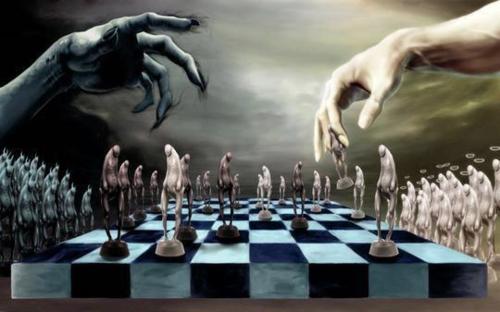Recently, a Facebook friend of mine shared an article from the popular anthropology blog Sapiens in the Folk Necromancy Facebook group that I co-moderate. This article, true to its title, sought to argue that AI (Artificial Intelligence) was similar to ‘magic’, at least in certain respects, and as understood by anthropologists at any rate. I approved my friend’s post to share with the group despite finding the article quite irritating. Being irritated about what people generally consider to be the minor or obscure details of things is arguably the bread-and-butter of academia, but I submit that I had a solid reason to be annoyed. Many of my disciplinary peers positively DELIGHT in writing ‘X thing is actually like Magic’ type hot-takes. I get why, of course. Our discipline has grappled more with the comparative study of what people often call ‘magic’, ‘science’, and ‘religion’ as ways of acting, knowing, and being in the world than probably any other. Considering how foundational witchcraft and magic are to the history and identity of our field, I guess every anthropologist is supposed to be able to at least trot out something about these topics. It’s our wheelhouse! The thing is – and here’s what bugs me – the anthropologists I typically see forwarding ‘X is really magic!’ arguments are almost never actually researchers of magical practices or of ritual specialists. They are almost always ethnographers who study ‘X’, whatever X may be. Continue reading
Tag Archives: ritual studies
The White-Robed, Dreadlocked Community: Dr Nida Chenagtsang’s Introduction to and Defense of the Ngakpa Tradition

(Ngakpa or non-celibate tantric yogis from the Rebkong ngakmang or tantric community performing rituals at Rigzin Rabpel Ling in July 2016)
Existing readers of this blog will know that my PhD research is concerned with ngakpa and ngakma (sngags pa/ma, the name for make and female long-haired, non-celibate tantric Buddhist vow-holders, ritual specialists and yogis). Ngakpa have been a crucial part of Buddhism in Tibet since the point of its very inception in that country, yet there continues to be a lot of misunderstanding about who ngakpa and ngakma are, what they do, what vows they hold and what role they have had or should have in Tibetan communities.
Dr Nida Chenagtsang is a ngakpa, traditional Tibetan doctor, scholar and teacher who hails from Malho in Amdo, North-Eastern Tibet. As I have mentioned elsewhere, for many years, he and his brother have committed themselves to preserving and promoting the Ngakpa tradition of non-celibate tantric practice both in Tibet and beyond. Continue reading
Embodying Healing: Tantric Ritual Short-hand and the Training of Anthropological Attention

Elaborate ritual procedures are a hallmark of Indo-Tibetan tantra. Tantric rites are often long and complex. Ceremonies typically involve multiple parts or stages, replete with lengthy chanted liturgies, extensive visualizations and gestures, and the making of both physical and imagined offerings. The ability to memorize such procedures, and to properly and elegantly execute the intricate choreographies of body posture and movement, recited mantras, and imagined forms which they require, is crucial to tantric expertise. Large-scale and extended rituals which involve a lot of people, ritual trappings, and processes are important in Tibetan Buddhist contexts and are conducted frequently. Yet the prevalence of externally elaborate ritual performances should not be taken to mean that smaller, quicker and more ‘internal’ rites are not also a vital part of Tibetan ritual specialists’ work. Continue reading
Tibet, the Role Playing Game: Table-top Anthropologies and Competing Knowledge Jurisdictions

When I was a kid growing up in pre- and post-Apartheid South Africa it wasn’t easy to study occultism.
To be sure, South Africa is a country filled with professional and semi-professional sorcerers, but it is also a nation whose white supremacist government for a long time directly funded a special ‘Occult-Related Crimes Unit’ attached to the national police force. This unit, which was founded in 1992 and which was supposedly officially disbanded/absorbed in 2006 (but which is in fact still operating in various capacities) was guided for the most part by the expertise and priorities of white, Afrikaner Christian investigators. Working under the auspices of the state, pastors with police training, criminology degrees and a measure of knowledge about local black South African ‘customs and traditions’ investigated South Africa’s dark and criminal occult underbelly. While the existence of witch-lynching and so-called ‘muthi killings’ – ritual murders conducted to ostensibly secure human parts for sale in criminal magical economies and use in rituals – served as the primary justification for state-spending on the Unit, the majority of the Unit’s time appears to have been spent on locating and routing out ‘cells’ of adult and teenage Satanists, and assisting especially young South Africans who had been afflicted by demons and other Satanic forces. Continue reading
